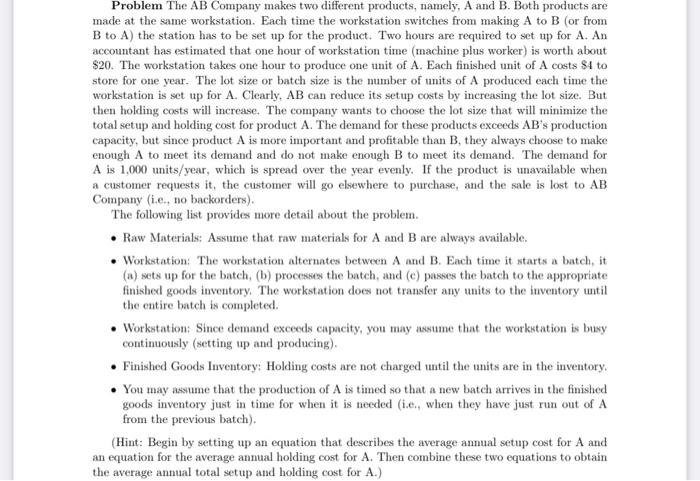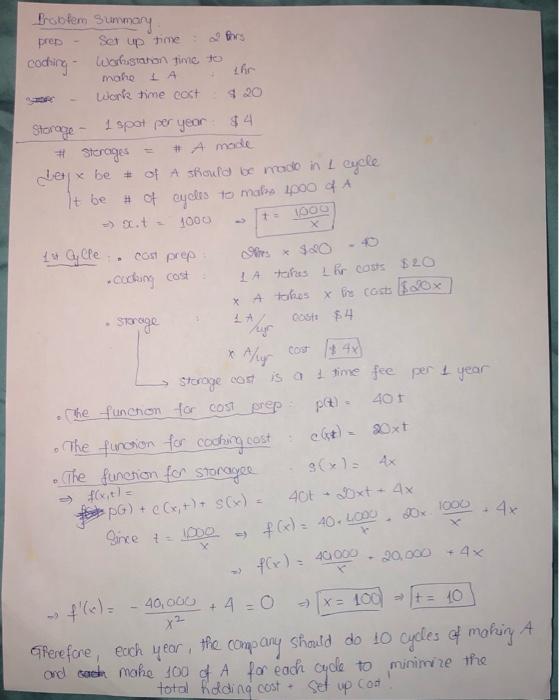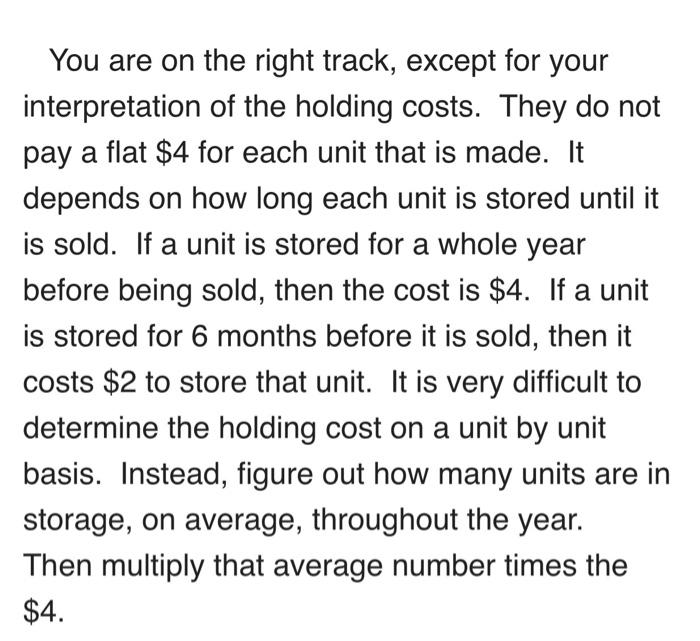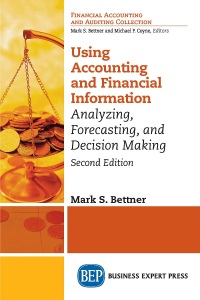the first photo is problem

the second one is my solution
the last one is from my instructor
the problem asked us to find how many A should be made in one cycle and how many cycles of making A in a year in order to minimize the setup, producing and holding cost for A. My instructor said my function for set up and producing was correct but not holding cost. Could you please help me out this part? thanks
Problem The AB Company makes two different products, namely, A and B. Both products are made at the same workstation. Each time the workstation switches from making A to B (or from B to A) the station has to be set up for the product. Two hours are required to set up for A. An accountant has estimated that one hour of workstation time (machine plus worker) is worth about $20. The workstation takes one hour to produce one unit of A. Each finished unit of A costs $1 to store for one year. The lot size or batch size is the number of units of A produced each time the workstation is set up for A. Clearly, AB can reduce its setup costs by increasing the lot size. But then holding costs will increase. The company wants to choose the lot size that will minimize the total setup and holding cost for product A. The demand for these products exceeds AB's production capacity, but since product A is more important and profitable than B, they always choose to make enough A to meet its demand and do not make enough B to meet its demand. The demand for A is 1,000 units/year, which is spread over the year evenly. If the product is unavailable when a customer requests it, the customer will go elsewhere to purchase, and the sale is lost to AB Company (.e., no backorders). The following list provides more detail about the problem. Raw Materials: Assume that raw materials for A and B are always available. Workstation: The workstation alternates between A and B. Each time it starts a batch, it (a) sets up for the batch, (b) processes the batch, and (c) passes the batch to the appropriate finished goods inventory. The workstation does not transfer any units to the inventory until the entire batch is completed. Workstation: Since demand exceeds capacity, you may assume that the workstation is busy continuously (setting up and producing). Finished Goods Inventory: Holding costs are not charged until the units are in the inventory. You may assume that the production of A is timed so that a new batch arrives in the finished goods inventory just in time for when it is needed (i.c., when they have just run out of A from the previous batch). (Hint: Begin by setting up an equation that describes the average annual setup cost for A and an equation for the average annual holding cost for A. Then combine these two equations to obtain the average annual total setup and holding cost for A.) Problem Summary prep moho 1000 - 0 Storage x Ally Set up time 2 fors. coching Workstation time to thr Worke time cost $20 Storage - 1 spot per year $4 # Storages # A mode Der be of A should be made in a cycle It be # of eyelis to malo po dA -) .t 1000 * o 14 alle cost prep. * $20 cucking cost LA takes 1 hr casts $20 * A tokes x Pre costs $20x LA by Ooft $4 cost 442 Storage 20 is a 1 time fee per 1 year the function for cost prep pt) 401 The function for coching cost et) - Dxt The function for storagee 401 Oxt - 4x :PG) + C (x, t) S(x) = + C) = 40.000. Jox. 100.4 f(x) = 40000 - 20,000 + 4x - 40,000 + 4 = 0 x = 100) (t = 10 ) X2 Gerefore, each year the company should do to cycles of making A and sack make 100 of A for each code to minimize the total holding cost set up con 0 Since t- #6) 1 You are on the right track, except for your interpretation of the holding costs. They do not pay a flat $4 for each unit that is made. It depends on how long each unit is stored until it is sold. If a unit is stored for a whole year before being sold, then the cost is $4. If a unit is stored for 6 months before it is sold, then it costs $2 to store that unit. It is very difficult to determine the holding cost on a unit by unit basis. Instead, figure out how many units are in storage, on average, throughout the year. Then multiply that average number times the $4










